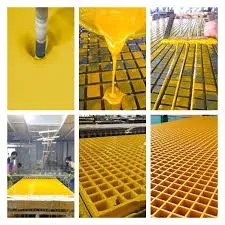
-
 Afrikaans
Afrikaans -
 Albanian
Albanian -
 Amharic
Amharic -
 Arabic
Arabic -
 Armenian
Armenian -
 Azerbaijani
Azerbaijani -
 Basque
Basque -
 Belarusian
Belarusian -
 Bengali
Bengali -
 Bosnian
Bosnian -
 Bulgarian
Bulgarian -
 Catalan
Catalan -
 Cebuano
Cebuano -
 China
China -
 China (Taiwan)
China (Taiwan) -
 Corsican
Corsican -
 Croatian
Croatian -
 Czech
Czech -
 Danish
Danish -
 Dutch
Dutch -
 English
English -
 Esperanto
Esperanto -
 Estonian
Estonian -
 Finnish
Finnish -
 French
French -
 Frisian
Frisian -
 Galician
Galician -
 Georgian
Georgian -
 German
German -
 Greek
Greek -
 Gujarati
Gujarati -
 Haitian Creole
Haitian Creole -
 hausa
hausa -
 hawaiian
hawaiian -
 Hebrew
Hebrew -
 Hindi
Hindi -
 Miao
Miao -
 Hungarian
Hungarian -
 Icelandic
Icelandic -
 igbo
igbo -
 Indonesian
Indonesian -
 irish
irish -
 Italian
Italian -
 Japanese
Japanese -
 Javanese
Javanese -
 Kannada
Kannada -
 kazakh
kazakh -
 Khmer
Khmer -
 Rwandese
Rwandese -
 Korean
Korean -
 Kurdish
Kurdish -
 Kyrgyz
Kyrgyz -
 Lao
Lao -
 Latin
Latin -
 Latvian
Latvian -
 Lithuanian
Lithuanian -
 Luxembourgish
Luxembourgish -
 Macedonian
Macedonian -
 Malgashi
Malgashi -
 Malay
Malay -
 Malayalam
Malayalam -
 Maltese
Maltese -
 Maori
Maori -
 Marathi
Marathi -
 Mongolian
Mongolian -
 Myanmar
Myanmar -
 Nepali
Nepali -
 Norwegian
Norwegian -
 Norwegian
Norwegian -
 Occitan
Occitan -
 Pashto
Pashto -
 Persian
Persian -
 Polish
Polish -
 Portuguese
Portuguese -
 Punjabi
Punjabi -
 Romanian
Romanian -
 Russian
Russian -
 Samoan
Samoan -
 Scottish Gaelic
Scottish Gaelic -
 Serbian
Serbian -
 Sesotho
Sesotho -
 Shona
Shona -
 Sindhi
Sindhi -
 Sinhala
Sinhala -
 Slovak
Slovak -
 Slovenian
Slovenian -
 Somali
Somali -
 Spanish
Spanish -
 Sundanese
Sundanese -
 Swahili
Swahili -
 Swedish
Swedish -
 Tagalog
Tagalog -
 Tajik
Tajik -
 Tamil
Tamil -
 Tatar
Tatar -
 Telugu
Telugu -
 Thai
Thai -
 Turkish
Turkish -
 Turkmen
Turkmen -
 Ukrainian
Ukrainian -
 Urdu
Urdu -
 Uighur
Uighur -
 Uzbek
Uzbek -
 Vietnamese
Vietnamese -
 Welsh
Welsh -
 Bantu
Bantu -
 Yiddish
Yiddish -
 Yoruba
Yoruba -
 Zulu
Zulu
frp winding machine
Understanding FRP Winding Machines
FRP (Fiber Reinforced Polymer) winding machines are specialized equipment designed for the production of composite materials that leverage the favorable properties of fibers, such as strength and flexibility. The manufacturing process involves winding continuous fibers around a core structure, typically made of materials like metal or plastic, to create robust and lightweight components used in various industries.
Understanding FRP Winding Machines
One of the primary advantages of using FRP winding machines is their ability to produce complex shapes that would be difficult or impossible to create with traditional materials. Applications range from aerospace components to automotive parts, and even large infrastructure projects such as pipes and tanks. The lightweight nature of FRP materials helps improve fuel efficiency in vehicles and contributes to the development of more sustainable construction practices.
frp winding machine

Automation is a significant trend in the development of FRP winding machines. Advanced control systems and software allow for more precise monitoring of winding parameters, such as speed, tension, and fiber angles. This level of automation reduces manual intervention, leading to improvements in production efficiency and quality consistency.
Moreover, the integration of robotics in the winding process enables manufacturers to produce intricate designs with minimal human error. Additionally, advancements in machine learning and artificial intelligence are beginning to influence FRP winding technology, offering predictive maintenance and optimization strategies that can further enhance operational efficiency.
In conclusion, FRP winding machines represent a key innovation in composite manufacturing. Their ability to produce strong, lightweight components efficiently opens up a myriad of possibilities across various sectors. As technology continues to evolve, these machines will likely become increasingly sophisticated, paving the way for new applications and improvements in material performance. The future of FRP technology appears promising, with endless potential for innovation and development.









